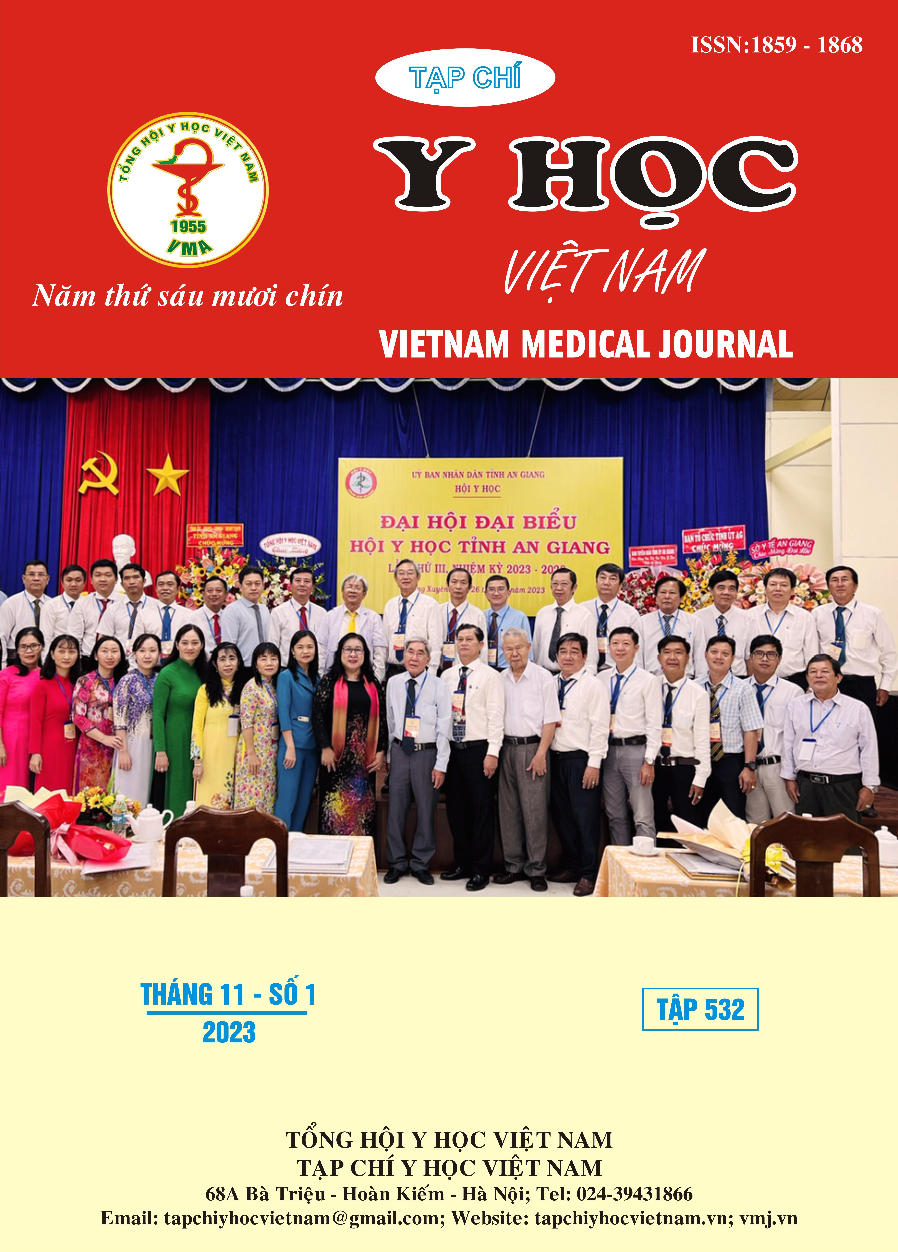RESEARCH ON SOME CLINICAL AND PARACLINICAL FEATURES, FACTORS RELATED TO DRUG-RESISTANT EPILEPSY IN CHILDREN
Main Article Content
Abstract
Objectives: Analysis of some clinical and paraclinical characteristics and identification of risk factors related to drug-resistant epilepsy in children. Subjects and methods: A cross-sectional descriptive study on 213 of 101 women (47.4%) and 112 men (52.6%) children with epilepsy was divided into 2 groups: Drug-resistant epilepsy (n = 112) and drug-responsive (n = 101). Diagnostic criteria according to the International Association of Antiepileptics (ILAE 2010). Results: Drug-resistant epilepsy with a history of status epilepticus accounted for 12.2%, neonatal seizures accounted for 8%, febrile seizures accounted for 20%, psychomotor retardation accounted for 48.1%. The average age of onset of drug-resistant epilepsy group was 12.5 ± 12 months, the average frequency of seizures in 1 day was 13 ± 11.6. Generalized epilepsy accounted for 70.4% in both study groups. There are 25 cases classified as syndrome, accounting for 11.7%. Subclinical results of EEG, abnormal brain MRI group with drug-resistant and responsive epilepsy accounted for 96.4% and 62.5%, respectively. Regression analysis: neonatal seizures, febrile seizures, history of status epilepticus, psychomotor developmental delay, EEG and MRI abnormalities were the factors associated with epilepsy. drug resistance. Conclusion: The history, clinical and laboratory features in pediatric epilepsy include history of neonatal seizures, history of febrile seizures, history of status epilepticus, and mental retardation. Neuromotor, EEG and brain MRI abnormalities are risk factors associated with drug-resistant epilepsy.
Article Details
Keywords
Childhood, epilepsy, drug-resistant epilepsy.
References
2. Berg A.T, Shinnar S, Levy S.R. (2001). Early development of intractable epilepsy in children: a prospective study. Neurology, 56(11), 1445-1452.
3. Kwan P, Arzimanoglou A, Berg A.T. (2010). Definition of drug resistant epilepsy: Consensus proposal by the ad hoc Task Force of the ILAE Commission on Therapeutic Strategies. Epilepsia, 51(6), 1069-1077.
4. Laxer K.D, Trinka E, Hirsch L.J. (2014). The consequences of refractory epilepsy and its treatment. Epilepsy & Behavior, 37, 59-70.
5. Tang F, Hartz A.M.S, Bauer B. (2017). Drug-Resistant Epilepsy: Multiple Hypotheses, Few Answers. Frontiers in Neurology, 8.
6. Trinka E, Bauer G, Oberaigner W. (2013). Cause-specific mortality among patients with epilepsy: Results from a 30-year cohort study. Epilepsia, 54(3), 495-501.
7. Vickers N.J. (2017). Animal communication: when i’m calling you, will you answer too? Current biology, 27(14), R713-R715.
8. Boonluksiri P, Visuthibhan A, Katanyuwong K. (2015). Clinical Prediction Rule of Drug Resistant Epilepsy in Children. J Epilepsy Res, 5(2), 84-88.
9. Kasprzyk M, Brola W, Wendorff J. (2014). Assessment of clinical risk factors for drug-resistant epilepsy in children and teenagers. sm, 3, 141-147.
10. Nguyễn Thụy Minh Thư, Nguyễn Lê Trung Hiếu. (2021) Mức độ khả thi, an toàn và hiệu quả của chế độ ăn Ketogenic trên bệnh nhân động kinh kháng thuốc tại Bệnh viện Nhi Đồng 2. Tạp chí Y học TP Hồ Chí Minh, tập 25, số 2.


